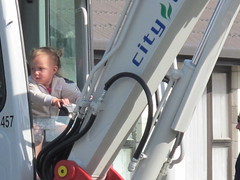
Search
Images for christchurch; more images...
Christchurch Press 18 July 2011: Section A, Page 1 (South Island Edition)
Articles, UC QuakeStudies
Page 1 of Section A of the South Island edition of the Christchurch Press, published on Monday 18 July 2011.
Shops in Opawa Road
Images, eqnz.chch.2010
Post February 22 Earthquake Damage PWS-2011-03-09-DSC9921
Shops in Opawa Road
Images, eqnz.chch.2010
Post February 22 Earthquake Damage PWS-2011-03-09-DSC9922
Shops in Opawa Road
Images, eqnz.chch.2010
Post February 22 Earthquake Damage PWS-2011-03-09-DSC9930
The Vault - RNZ in Christchurch during the February 2011 quake
Audio, Radio New Zealand
Radio New Zealand has had to abandon the Christchurch building that was it's base and the home of Sound Archives - Nga Taonga Korero. Deborah Nation tells its earthquake story through audio - starting with the interview Brigette Mills was recording at 12:51pm on 22 February 2011.
Head of CERA describes view of Christchurch from the air
Audio, Radio New Zealand
The head of the Canterbury Earthquake Recovery Authority, Roger Sutton, flew over the quake-hit city after today's first shake.
HMNZS Canterbury re-supplies for the Christchurch earthquake relief effort
Videos, UC QuakeStudies
A video about the HMNZS Canterbury which travelled to Wellington after the 22 February 2011 earthquake to refuel and gather supplies. The crew worked overnight to ensure that they could return to the people of Lyttelton as quickly as possible.
Nisbet, Alistair, 1958- :Uses for Christchurch rubble?... 19 July 2011
Images, Alexander Turnbull Library
Text reads 'Uses for Christchurch rubble?...' The cartoon shows a bridge made partially of earthquake rubble leading from Lyttelton Harbour to Diamond Harbour on Banks Peninsula. Someone in a van says 'At long last... A bridge to Diamond Harbour!' And someone else says 'And somewhere to fish!' Context - Rubble from the earthquake may be used for the construction of watersides and bridges. This cartoon is a fanciful use for Christchurch earthquake rubble. Currently a ferry connects Diamond Harbour to Lyttelton, on the harbour's northern shore. In combination with buses from Lyttelton to downtown Christchurch, this allows residents of Diamond Bay to commute to the city. Quantity: 1 digital cartoon(s).
Fairfax Video, April 2011 (2)
Videos, UC QuakeStudies
A video about the work which is being conducted in the Christchurch Red Zone in the weeks after the 22 February 2011 earthquake. Members of the New Zealand Army and Civil Defence are working to secure business premises by boarding up broken windows and doors. The video also includes footage of the damage to the Fisher's Building, the Press Building, Ballies Bar, and ChristChurch Cathedral, and many buildings on High Street.
Fairfax Video, February 2011 (5)
Videos, UC QuakeStudies
A video of the Christchurch central city recorded shortly after the 22 February 2011 earthquake. In the video, Press reporter Olivia Carville describes the experiences of people within the central city. There is also footage of a woman being rescued from the ChristChurch Cathedral, people trapped in the Press building, damaged buildings on Colombo Street and Manchester Street, people evacuating the Forsyth Barr building using a rope, and people gathering in Latimer Square.
Chimney Book
Videos, NZ On Screen
Chimney Book takes rubble from the Christchurch earthquake, and turns it into the building blocks of a film exploring life in the quake zone. Christchurch musician Blair Parkes took bricks from his chimney — destroyed in the 22 February 2011 aftershocks — painted a letter or symbol on each, then scanned them into his computer. Sound and word form the spine of the result, which is part diary, part experimental film. Parkes explores his experiences of living in Christchurch since the quake through words like 'dust', 'memory', 'place', and a question: 'is it over?'
Corner Colombo and Hereford Sts.
Images, eqnz.chch.2010
None
Worcester St
Images, eqnz.chch.2010
Museum in distance
Grand Chancellor Hotel minus roof
Images, eqnz.chch.2010
None
Amazon Shop in Colombo St.
Images, eqnz.chch.2010
None
Cashel mall
Images, eqnz.chch.2010
Within the Cordon
IMG_1725
Images, eqnz.chch.2010
None
IMG_1772
Images, eqnz.chch.2010
None
IMG_1786
Images, eqnz.chch.2010
None
IMG_1790
Images, eqnz.chch.2010
None
IMG_1792
Images, eqnz.chch.2010
None
IMG_1726
Images, eqnz.chch.2010
None
IMG_1798
Images, eqnz.chch.2010
None
IMG_1796
Images, eqnz.chch.2010
None
IMG_1774
Images, eqnz.chch.2010
None
IMG_1793
Images, eqnz.chch.2010
None
IMG_1787
Images, eqnz.chch.2010
None
IMG_1788
Images, eqnz.chch.2010
None
IMG_1779
Images, eqnz.chch.2010
None
IMG_1783
Images, eqnz.chch.2010
None



